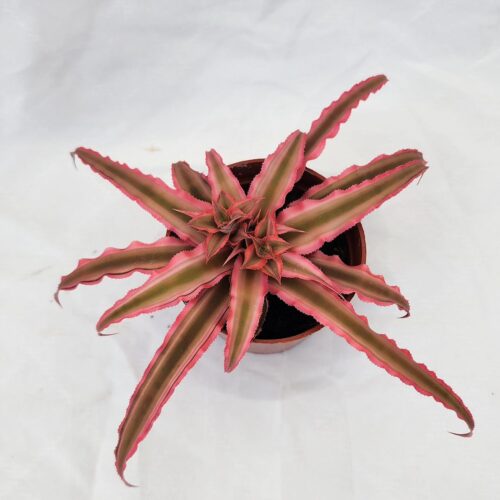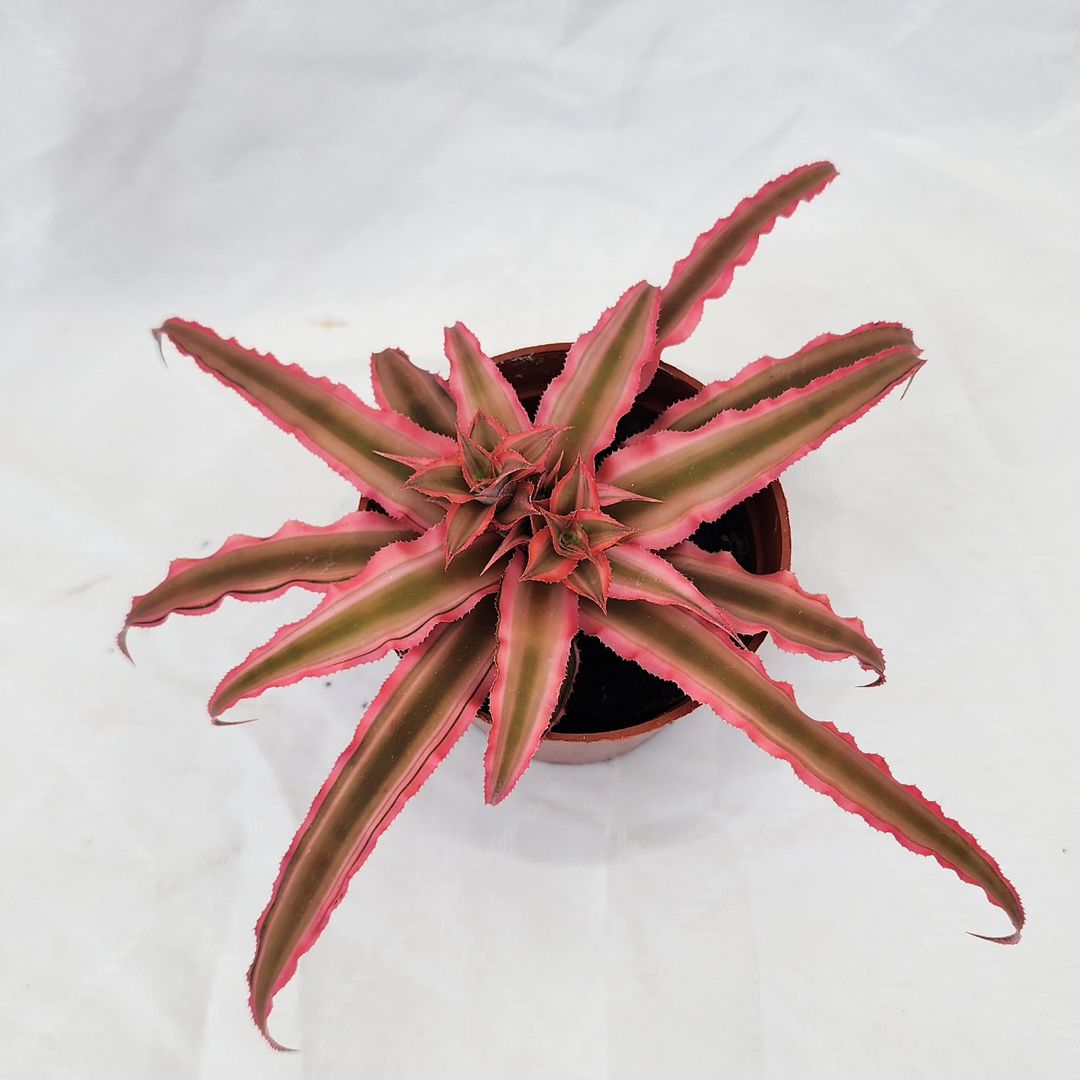Cryptanthus bromeliads are loved for their rosette-shaped arrangement of leaves in bright pink to red colors.
Cryptanthus (Cryptanthus spp.) is a perennial plant from the family of bromeliads. The natural habitat is the territory of Brazil, where the flower grows up to half a meter, and its spreading, variegated leaves transform the surrounding area. It is used as a houseplant in our climate zone and grows much smaller.
The main feature of this plant is the absence of stems and the presence of large elongated leaves collected in a large basal rosette. Such an unusual appearance contributed to the flower’s second name – Earth Star. It has leathery leaves that resemble stars. They can be greenish-white, reddish-brown, yellow, or pink.
Flowers collected in paniculate or spike-shaped inflorescences are less attractive than the crown. They are small, formed in the center of the rosette of leaves. Visually, these are small white bells with well-defined yellow stamens. Green bracts frame the petals. The plant blooms in summer and then forms a small seed box, containing a large number of small seeds.
Propagating Cryptanthus

Cryptanthus forms offset across the year. Once the mother plant gradually dies after blooming, pups begin to develop between the foliage, let them allow to remain in place until you decide to propagate.
Remove the offsets carefully and plant them in the same type of soil mix used for the parent plant. After planting the offsets in a container, cover with plastic and make holes for ventilation. Keep the pots in a bright area. In just 2-3 months, the root system of the plant will develop.
Types of Cryptanthus
Cryptanthus is a large genus that includes a huge range of plants. Some of them are discussed below.
- Cryptanthus ‘Osiris’: bright and colorful
- Marginatus: having margins
- Bromelioides: like a bromelia
- Sinuosus: sinuous or winding
- Carnosus: pink (meat-colored)
- Lacerdae: tattered
- Bivittatus: having two stripes
- ‘Black Mystic’ bromeliad: dark leaves
- Scaposus: having a scape
- Coriaceous: feather-like
- Zonatus: having zones or bands
- Fuscus: dark, dusky
- Latifolius: wide leaved
- Viridis: green
- Surantiacus: orange
- Acaulis: stemless
Ideal Growing Conditions for Cryptanthus
Light
Keep the plant in indirect light throughout the day, while growing indoors set it on any window except south-facing ones. This plant requires plenty of light but in indirect form, bright sun rays can burn the foliage.
Soil
The soil should be loose, well-drained, and nutritious. Make your own in a ratio of 1: 0.5: 1: 3: 1 with sphagnum moss, humus, leaf soil, pine bark, and horse peat.
Watering
Excessive soil moisture should not be allowed; the root system is quite susceptible and can rot quickly. In summer, water the plant abundantly but reduce in fall and winter. Watering has to be moderate and regular. The soil should be constantly slightly moist but not wet.
Temperature
The plant can not tolerate freezing winter temperatures as it comes from humid conditions. While growing indoors, normal room temperature will be good. Keep the plant outdoors in a temperature range of 65-75 F.
Humidity
The plant prefers high humidity. Mist the leaves regularly for proper growth. Setting the plant in a semi-enclosed glass container, where moisture is stored longer, will also help greatly create an optimal atmosphere.
Cryptanthus Care
Fertilizer
Feed the plant with dilute liquid fertilizer in the spring. Do not apply any additional fertilizer in the summer and fall.
Repotting
Transplantation is done rarely, if necessary. Due to the fact that Cryptanthus grows slowly and may last just a few years. The delicate roots cannot withstand repotting.
Pests and diseases
Cryptanthus is resistant to various diseases and pests. The biggest issue is overwatering, the plant has delicate roots and foliage, consistent moisture can result in rot and fungal growth. If rot spreads to the rosette, the entire plant can die.
Trim off the affected parts if you detect the rot earlier and transplant it to the new pot. Scale insects can be a problem when it is found, remove them with a cotton swab but avoid using insecticide as it can damage the plant.



